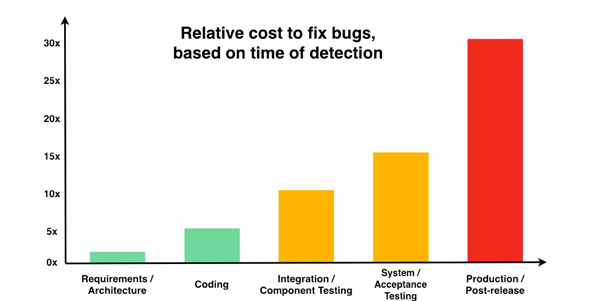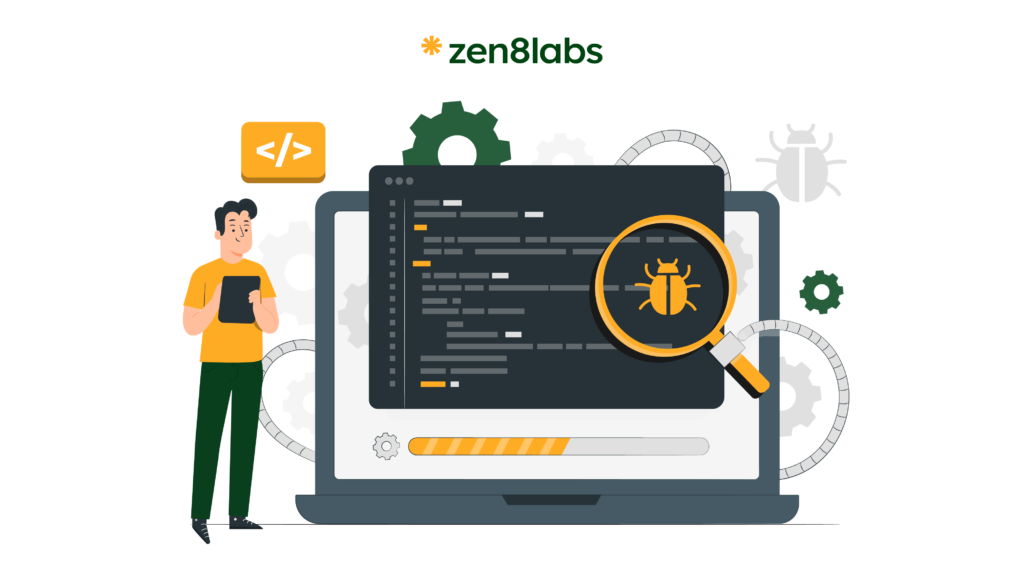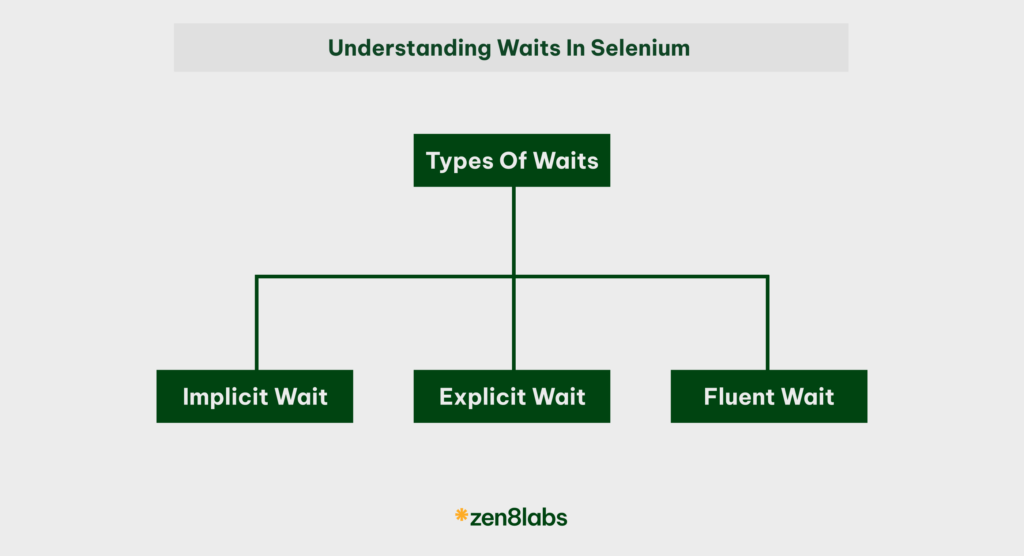
During a recent Friday Share meeting at zen8labs, our team leader initiated a thought-provoking discussion about the testing process. He posed a question that struck a chord with a lot of us: Have you ever been part of a software project that exceeded its budget or missed its deadline? The answer, for most, was a resounding yes. Surprisingly, our leader pointed out that incorrect planning isn’t always the main cause behind these challenges
This realization led us to explore “Shift-Left” testing—a proposed solution poised to address this long-standing challenge. By advocating for the early integration of testing activities, “Shift-Left” testing promises to transform the way we approach software development. Join us as we uncover the transformative potential of Shift-Left testing and its impact on project success.
Understand the concept of Shift Left

In a traditional software development life cycle, testing has typically been confined to the latter stages, often occurring at the end of the process. However, the drawbacks of this approach have become increasingly evident over time. Bugs discovered late in the development cycle can result in substantial costs and require extensive efforts to fix them, leading to project delays, budget overruns, and compromised product quality.
This realization and the big lesson learned, introduced a great revolution in the software industry and gave birth to a new concept called “Shift Left”. This means shifting the “Testing Phase” to the left from the right or involving testing at every stage and involving testers throughout.
The key principle of “Shift Left” is to identify and address defects as early as possible in the development lifecycle. By catching issues sooner, teams can reduce the risks, streamline development workflows, and ultimately deliver higher-quality software products. This approach also helps to reduce the time and cost associated with fixing defects, as issues are identified and resolved before they escalate.
Overall, the concept of “Shift Left” represents a fundamental change in how organizations approach quality assurance, prioritizing early testing and defective prevention over detection. By embracing “Shift Left” principles, teams can accelerate development cycles, improve software quality, and ultimately deliver greater value to customers.
The benefits of Shift Left testing
The “Shift Left” approach represents a fundamental shift in how testing is approached within the software development lifecycle. By involving testers in critical stages of the program from the outset, this methodology empowers testers to transition from mere defect detection to proactive defect prevention. Thereby aligning testing efforts with the overarching business goals of the program. This heightened involvement brings about a significant increase in the roles and responsibilities of testers, transforming their role from mere executors of testing tasks to strategic partners driving the long-term vision of the product.
With increased responsibility, testers no longer focus solely on identifying bugs but instead collaborate with the team early on, to plan and execute a robust testing strategy. This entails providing leadership and guidance to the team, ensuring that testing efforts are aligned with customer expectations and aimed at delivering superior user experience. Furthermore, the “Shift Left” approach empowers testers to design tests focused explicitly on customer needs, enabling developers to create software that directly meets these requirements.
The impact of the “Shift Left” approach extends beyond testers to developers as well. By shifting testing activities leftward, developers are encouraged to take more ownership of their code and assume greater responsibility for testing. This collaborative approach fosters a culture of shared accountability for software quality and promotes the adoption of practices such as Behavioral Driven Development (BDD) and Test-Driven Development (TDD), which help prevent defects from being introduced into the software.
In the context of Agile development, the “Shift Left” approach seamlessly integrates with Agile Scrum teams, mandating the inclusion of testers alongside other roles. Testers actively participate in stand-up calls, review meetings, and other interactions, gaining deeper insights into the program and providing rapid feedback that helps prevent defects from proliferating in the software. This iterative and collaborative approach to testing ensures that quality is built into the software from the outset, leading to more efficient development cycles, higher-quality products, and ultimately, greater customer satisfaction.
To sum up, Testers should “Get Involved Early” and collaborate on ideas and requirements at every stage where the results affect the value of the final deliverables. This approach also helps the project identify risks and mitigate them beforehand. This is known overall as shift left testing.
What should testers do when adopting a Shift Left testing approach?

- Early requirement analysis: Testers collaborate with stakeholders, including product owners and business analysts, to understand and analyze project requirements from a testing perspective. By participating in requirement gathering sessions early on, testers can identify potential risks, ambiguities, and inconsistencies that could impact the quality of the software.
- Test planning and strategy development: Testers play a crucial role in defining the overall testing strategy and approach for the project. This includes determining the scope of testing, identifying testing objectives and priorities, and selecting appropriate testing techniques and tools. Testers also collaborate with other team members to establish testing timelines, milestones, and deliverables.
- Test case design and development: Tester’s design and develop test cases based on project requirements, user stories, and acceptance criteria. These test cases are designed to verify the functionality, performance, security, and usability aspects of the software. Testers also prioritize test cases based on risk and criticality to ensure comprehensive test coverage within time and resource constraints.
- Early test execution: In a “Shift Left” approach, testing activities commence as early as possible in the development lifecycle. Testers execute test cases against early versions of the software, such as prototypes, mock-ups, or minimal viable products (MVPs), to identify defects and provide timely feedback to developers. This early test execution helps detect issues sooner, reducing the cost and effort required for bug fixes.
- Continuous integration and deployment (CI/CD) testing: Testers collaborate with developers to integrate testing into the CI/CD pipeline, ensuring that automated tests are executed continuously throughout the development process. This enables rapid feedback on code changes, facilitates early defect detection, and supports the delivery of high-quality software at a faster pace.
- Collaboration and communication: Testers actively participate in cross-functional team meetings, such as daily stand-ups, sprint planning sessions, and retrospectives, to share testing updates, discuss issues, and align testing efforts with overall project goals. Effective collaboration and communication with developers, product owners, and other stakeholders are essential for successful implementation of “Shift Left” testing.
- Continuous improvement: Testers continuously evaluate and improve testing processes, methodologies, and tools to enhance efficiency, effectiveness, and quality. This includes adopting best practices, incorporating lessons learned from previous projects, and staying updated on emerging trends and technologies in the testing domain
Conclusion
In conclusion, “Shift-Left” testing represents a fundamental shift in how organizations approach quality assurance, emphasizing the proactive involvement of testing activities from the outset of a project. By catching defects early, reducing costs, improving collaboration, accelerating time-to-market, and enhancing software quality. “Shift-Left” testing empowers organizations to deliver high-quality software products that meet the evolving needs of users and stakeholders. By embracing “Shift-Left” testing and implementing practical tips for its implementation, organizations such as ourselves at zen8labs can position themselves for success in today’s competitive software development landscape.
Quynh Le, Quality Assurance Engineer





